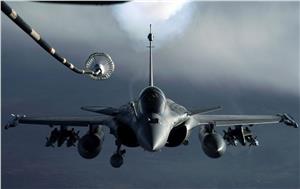Navigating the Cosmos: Space Communication Protocols - International Defense Security & Technology
Introduction
In the vast expanse of space, where distances are measured in light-years, and obstacles like planets and celestial bodies can disrupt signals, maintaining seamless communication is no easy task. Yet, the success of space missions, from exploring distant planets to sending crucial data back to Earth, hinges on reliable and efficient communication protocols. Among the array of space communication protocols, Delay-Tolerant Networking (DTN) and the Consultative Committee for Space Data Systems (CCSDS) standards stand out as indispensable tools for ensuring data reaches its destination, no matter how challenging the journey may be. Delay-Tolerant Networking (DTN): Paving the Way for Deep Space Communication
Imagine sending a message to a spacecraft millions of miles away, and waiting for hours or even days for a response. This is the reality of deep space communication, where traditional internet protocols fall short due to long signal delays and intermittent connectivity. Enter Delay-Tolerant Networking (DTN), a game-changing protocol designed to overcome these obstacles and enable seamless communication in the most remote corners of the cosmos. - The Challenge of Deep Space CommunicationDeep space missions, such as those exploring Mars or studying distant asteroids, encounter communication challenges not found on Earth. The vast distances introduce signal delays that can range from minutes to hours. Moreover, celestial bodies often block direct line-of-sight communication between spacecraft and Earth, leading to extended periods of radio silence.
- How DTN WorksDTN addresses these challenges by introducing a store-and-forward approach. Instead of attempting to establish a continuous connection, DTN-enabled spacecraft store data locally and forward it opportunistically when a connection becomes available. This "bundle" approach ensures that no data is lost due to signal disruptions or delays.
- Applications of DTNDTN has revolutionized deep space missions by enabling scientists and engineers to receive critical data and send commands reliably. It has been instrumental in missions like the Mars rovers, where data must traverse vast interplanetary distances. DTN also plays a pivotal role in planning missions to the outer reaches of the solar system and beyond.
Consultative Committee for Space Data Systems (CCSDS): Setting the Standards for Space Communication
In the realm of space communication, standardization is key to interoperability and ensuring that data can be exchanged seamlessly between different spacecraft and ground stations. The Consultative Committee for Space Data Systems (CCSDS) has been at the forefront of establishing these standards, providing a framework for space data communication that is both reliable and efficient. - The Need for StandardsImagine a scenario where each space agency and mission used its unique communication protocols. Chaos would ensue, hindering collaboration and data sharing. CCSDS recognized this challenge and set out to create a standardized framework for space communication.
- CCSDS StandardsCCSDS standards cover a wide range of aspects related to space data communication, including data formatting, error correction, compression, and security. These standards ensure that data transmitted from a spacecraft adheres to a common format that ground stations can understand and process.
- Reliable Data Transfer ProtocolsOne of the critical contributions of CCSDS is the development of reliable data transfer protocols. These protocols guarantee that data sent from a spacecraft is received without errors and can be reconstructed if necessary. This reliability is paramount in space missions, where data integrity is non-negotiable.
Conclusion
In the grand theater of space exploration, where the stakes are high, and the distances are vast, communication protocols like DTN and CCSDS standards are the unsung heroes. They enable us to connect with distant spacecraft, receive breathtaking images of far-off worlds, and gather critical scientific data. As we venture further into the cosmos, these protocols will continue to evolve, ensuring that the wonders of the universe remain within our reach, just a signal away. 2024-02-19 Rajesh Uppal Share









